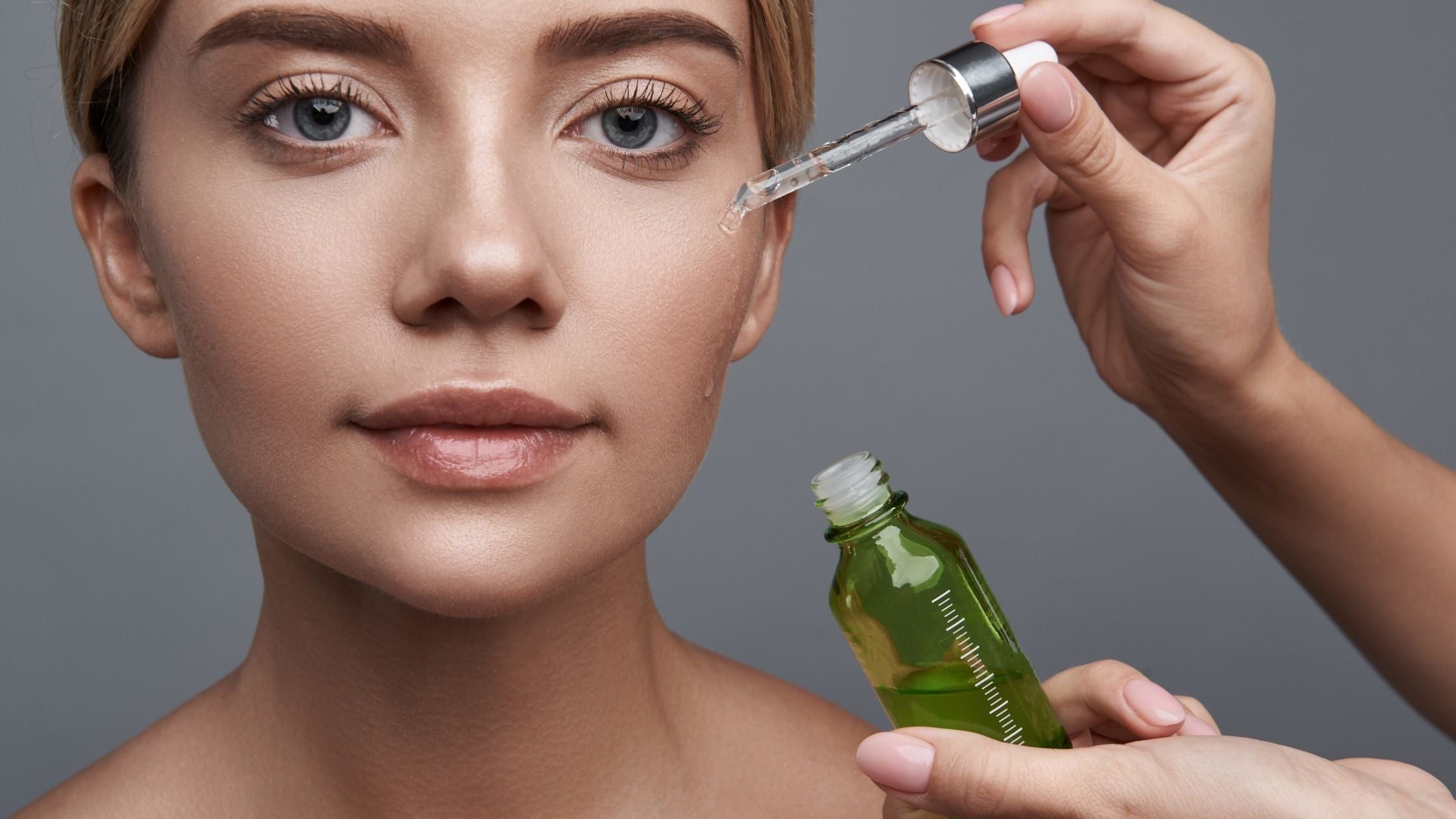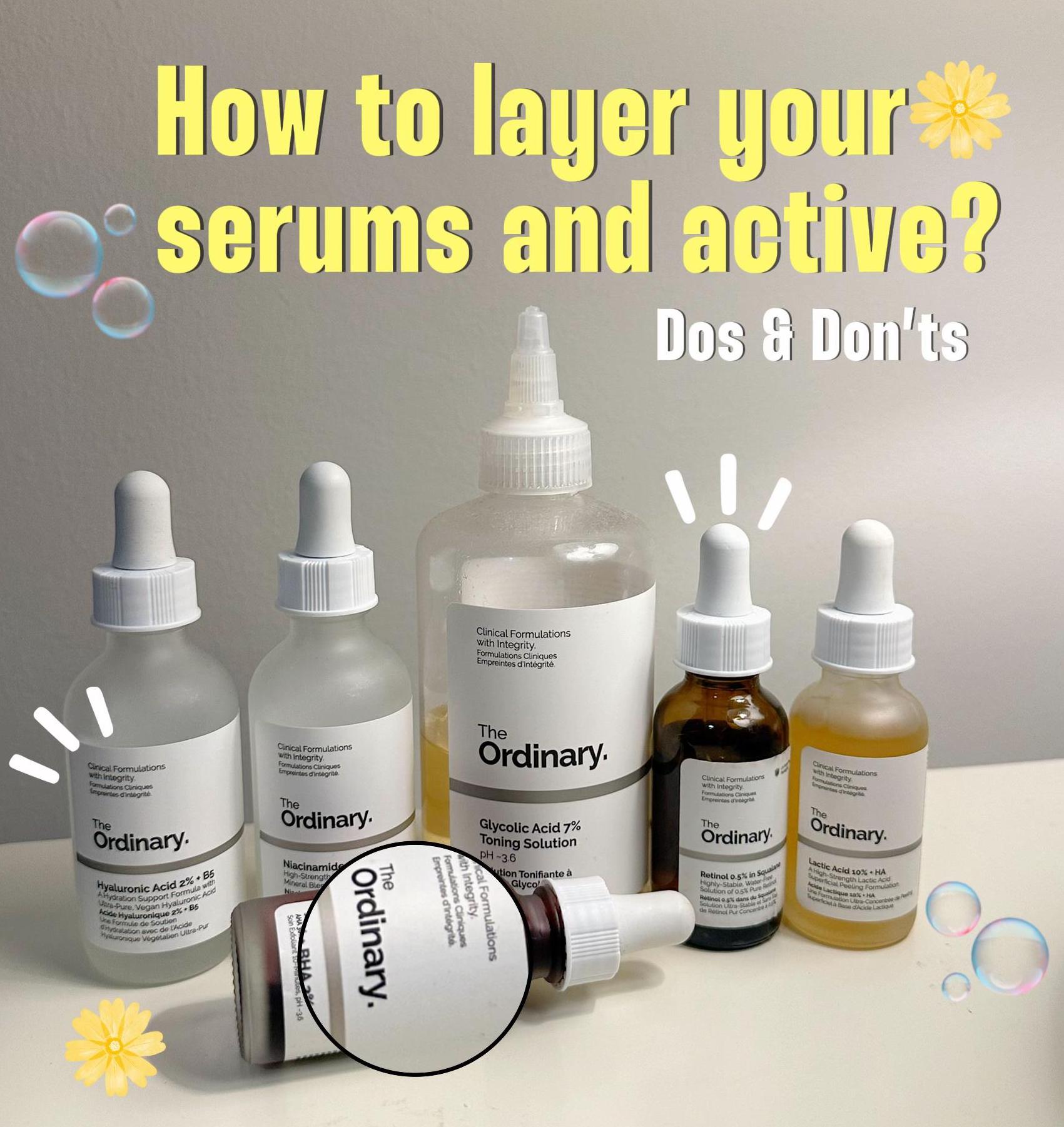


Date: 06 Oct 2025
If you’re serious about skincare, one of the most important things you can do is learn how to layer your products properly. It’s not just about what you use — it’s about when and how you apply each product. Skincare isn’t a one-size-fits-all routine, but the order in which you apply your cleanser, toner, serum, moisturizer, and sunscreen can greatly impact how well they work.
In this guide, you’ll learn:
Layering your skincare properly is essential for maximizing effectiveness. Each product in your routine is formulated with a specific molecular weight, texture, and absorption rate. Applying them in the right sequence allows your skin to absorb the active ingredients properly and perform at its best.
Let’s break down the ideal layering process. This routine is universal and can be followed for both your morning and evening skincare routines, with a few minor adjustments depending on the time of day.

Your skincare routine should always begin with a clean face. Cleansing helps remove dirt, sweat, excess oil, sunscreen, and any traces of makeup — allowing the following products to penetrate effectively. In the evening, especially if you wear makeup or SPF, a double cleanse is highly recommended: start with an oil-based cleanser to dissolve buildup, followed by a gentle water-based cleanser to refresh the skin.
CeraVe Hydrating Cream to Foam Cleanser — This is a dermatologist-developed cleanser designed for normal to dry and sensitive skin. Unlike harsh cleansers, it gently removes impurities, sunscreen, and makeup while keeping the skin hydrated and balanced.
La Roche-Posay Toleriane Dermallergo Fluid — If your skin often reacts to skin care products, environmental factors, or stress, La Roche-Posay Toleriane Dermallergo Fluid is the solution. This dermatologist-approved moisturizer is specifically formulated to soothe, hydrate, and protect even the most sensitive skin.
Toner is the second step, and it's one that many people skip — but shouldn't. Toners help to rebalance the skin’s pH after cleansing, especially if your cleanser is on the more alkaline side. They also prep the skin to absorb serums and moisturizers more efficiently, acting like a sponge primer for your skin. Depending on your skin type, you can use a hydrating, exfoliating, or calming toner.
Thayers Alcohol-Free Rose Petal Witch Hazel Toner — This alcohol-free toner is a favorite for its soothing and hydrating properties. Made with witch hazel, aloe vera, and rosewater, it calms irritation while lightly moisturizing. It’s a great choice for all skin types, especially dry or sensitive skin that needs a hydration boost post-cleansing.
Paula’s Choice 2% BHA Liquid Exfoliant — If you're battling acne or clogged pores, this toner works double-duty. The salicylic acid goes deep into pores to remove buildup and prevent breakouts. It exfoliates gently but effectively, revealing smoother, clearer skin with consistent use.
Serums are your treatment step. They’re lightweight but packed with high concentrations of active ingredients that target specific concerns like dehydration, pigmentation, fine lines, or acne. Because serums are designed to penetrate deeply, they should be applied before heavier products like moisturizers.
The Ordinary Niacinamide 10% + Zinc 1% Serum — A cult favorite, this serum helps balance oil production, minimize the look of pores, and reduce redness. Niacinamide is great for strengthening the skin barrier, while zinc calms inflammation. It’s ideal for oily, combination, or acne-prone skin — and is extremely budget-friendly.
SkinCeuticals C E Ferulic Serum — Known as one of the best Vitamin C serums in dermatology, this formula provides powerful antioxidant protection while brightening and firming the skin. With Vitamin C, Vitamin E, and ferulic acid, it helps reduce signs of aging and prevent sun-induced damage. It’s a premium option with clinically proven results — perfect for dull, aging, or sun-damaged skin.
CeraVe Hydrating Hyaluronic Acid Serum — This is expertly developed by dermatologists to deliver long-lasting hydration and restore the skin’s natural protective barrier. Whether you’re dealing with dryness, tightness, or early signs of aging, this serum provides deep moisture while helping to reinforce your skin’s health.
Moisturizer acts as a seal — locking in hydration and all the benefits from your serum while creating a barrier against environmental stress. It also prevents water loss, keeping your skin soft and balanced throughout the day or night. The right moisturizer will depend on your skin type and the season.
Neutrogena Hydro Boost Gel Cream — This gel-based formula is a savior for oily and combination skin. It’s packed with hyaluronic acid, delivering lasting hydration without clogging pores. The lightweight texture absorbs instantly, making it a great base under makeup or SPF.
CeraVe Moisturizing Cream — For dry or compromised skin, this rich cream offers deep, lasting hydration. It contains essential ceramides and MVE Technology that releases moisturizing ingredients over time. It's especially beneficial for eczema-prone, sensitive, or flaky skin and has earned dermatologist approval for a reason.
Garnier Skin Active Hydra Bomb — This refreshing tissue mask moisturizer hydrates without heaviness. Its botanical blend soothes and nourishes while offering a cooling effect. Ideal for all skin types, it’s particularly loved by those who want hydration without a greasy or sticky finish.
The final step in your morning routine should always be sunscreen. No matter how well you’ve layered your serums and moisturizers, none of it matters without protection from UV rays. Sunscreen not only prevents premature aging but also protects your skin from hyperpigmentation, sunburn, and long-term damage.
EltaMD UV Clear Broad-Spectrum SPF 46 — This lightweight, fragrance-free sunscreen is beloved by dermatologists and acne-prone users alike. It includes niacinamide and hyaluronic acid to soothe and hydrate while offering high-level UVA/UVB protection. It leaves no white cast and works well under makeup.
La Roche Posay Anthelios Ultra Face UVMune — Offering strong UV protection, this sunscreen is water-resistant and silky smooth. It’s gentle on sensitive skin and leaves a moisturized, non-greasy finish. Perfect for outdoor days, this formula gives peace of mind when you need lasting, high-strength coverage.
Even with the best products, simple mistakes can ruin the effectiveness of your skincare routine. Avoid these common errors:

Layering skincare the right way doesn’t need to be complicated — just intentional. Focus on:
Skincare is personal, but the principles of proper layering are universal. Mastering this simple technique can elevate your results, protect your skin barrier, and make every product in your routine work harder for you.
Q1: Can I use more than one serum at a time?
Yes, but layer serums from thinnest to thickest in texture and avoid layering multiple potent actives (e.g., retinol and acids together). If unsure, alternate them morning and night or on different days.
Q2: Should toner be applied with a cotton pad or hands?
Both methods work. Use a cotton pad for exfoliating toners and your hands for hydrating or calming ones to press the product into the skin gently.
Q3: What if I use face oil?
Face oils should be applied after moisturizer but before sunscreen (if used in the morning). Oils are occlusive and should go on last to seal everything in.
Q4: How long should I wait between skincare steps?
Ideally, 30 to 60 seconds between each step gives products enough time to absorb without disrupting their function.